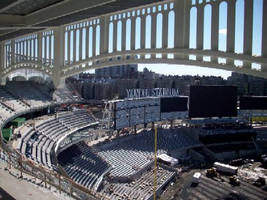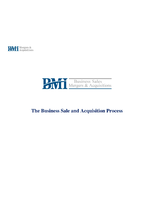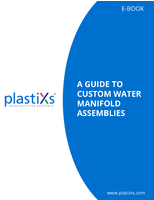'Green' Building Trends Gain Momentum Spurring Demand for Low-VOC Products.

The "green" building market is alive and well according to indicators that show owners and the architectural and engineering communities are looking beyond initial costs and adopting life-cycle analysis and resource conservation measures into their site planning, design and construction stages. Evidence of this trend has been found in recent studies by industry researchers, design firms and analysts for the construction industry.
McGraw-Hill Construction anticipates the green building market will expand from $12 billion in 2008 to $60 billion by 2010. In its 2008 survey of financial services executives, the IBT Enterprises design firm found that 75 percent of the companies planning new building projects were considering green materials and features. A similar finding is contained in a 2008 survey by Turner Construction Company of real estate executives who reported that recent developments in the credit markets would not make their companies less likely to construct green buildings.
In its 2008 U.S. Construction Overview, FMI estimated that $21 billion of all new nonresidential construction would employ the use of green building principles, compared to $13.4 billion in 2006. The provider of management consulting and investment banking for the worldwide construction industry concluded that green building will continue to grow as the construction industry responds to government initiatives and improvements in environmentally conscious green building products.
The growing demand for green building materials includes the new generation of architectural and industrial coatings with low- and zero-volatile organic compounds (VOCs). Among the organizations establishing acceptable VOC standards in coating products are the US EPA, the California Air Resource Board (CARB), the Ozone Transport Commission (OTC) and the South Coast Air Quality Management District (SCAQMD).
"The most restrictive field application regulation in the U.S. is the South Coast rule, which is 100 grams per liter for the industrial maintenance category," according to Mark Thomas, vice president of Marketing for Tnemec. "The regulations adopted in California will continue to have a significant influence on other parts of the U.S."
Revised standards for CARB and Canada are expected to be implemented in 2010, while the National AIM Rule, which covers most of the U.S., is being revised with compliance expected to be required in 2011. "The industry expects the new [national] AIM rule to be modeled after the current OTC limits for VOC content," Thomas noted. "At Tnemec, we continue to introduce low-VOC products in anticipation of these new compliance dates." A flier listing the upcoming VOC limits for the National AIM Rule, SCAQMD, CARB and Canada is available by clicking here.
Also driving the demand for low-VOC coatings is the U.S. Green Building Council's Leadership in Energy and Environmental Design (LEED) rating system, which is widely accepted as the national standard in green building. Under the LEED for New Construction (NC) 2.2 program, buildings are rated in five categories designed to protect the environment, reduce energy consumption, encourage water and energy efficiency and reduce emissions. Using low-VOC coatings that ensure good indoor air quality is one way buildings can earn credit toward LEED certification.
These low-VOC coatings use advanced technologies to meet performance requirements of the products they replace. In many cases, the technology found in low-VOC coatings allows them to outperform older formulation coatings in nonresidential and even industrial applications.
At the new $1.5 billion Yankee Stadium, for example, all of the Tnemec coatings used on more than 8,000 tons of architecturally exposed structural steel met the OTC district rules. The steel was shop-primed with Tneme-Zinc, an advanced technology zinc-rich urethane with excellent corrosion resistance and long-lasting performance. Some of the steel also received a shop-applied coat of Endura-Shield II, an aliphatic acrylic polyurethane that is highly resistant to abrasion, wet conditions, exterior weathering and ultraviolet light. Following construction, steel that came from the fabricator with only a prime coat of Tneme-Zinc received either two coats of Endura-Shield II, or a tie-coat of Typoxy, a polyamide epoxy, and a finish coat of Endura-Shield II. Nearly 8,000 gallons of primer and more than 12,000 gallons of intermediate and finish coatings were required to complete Yankee Stadium, which has been described as the most expensive sports stadium in the U.S.
As regulators continue their push for green products that help reduce air pollution, Tnemec is developing architectural and industrial coating technologies that are virtually odor free and VOC compliant in every regulatory district. In addition to meeting stricter green standards, these emerging technologies will offer improved performance and application advantages over existing solvent-based coating systems.




